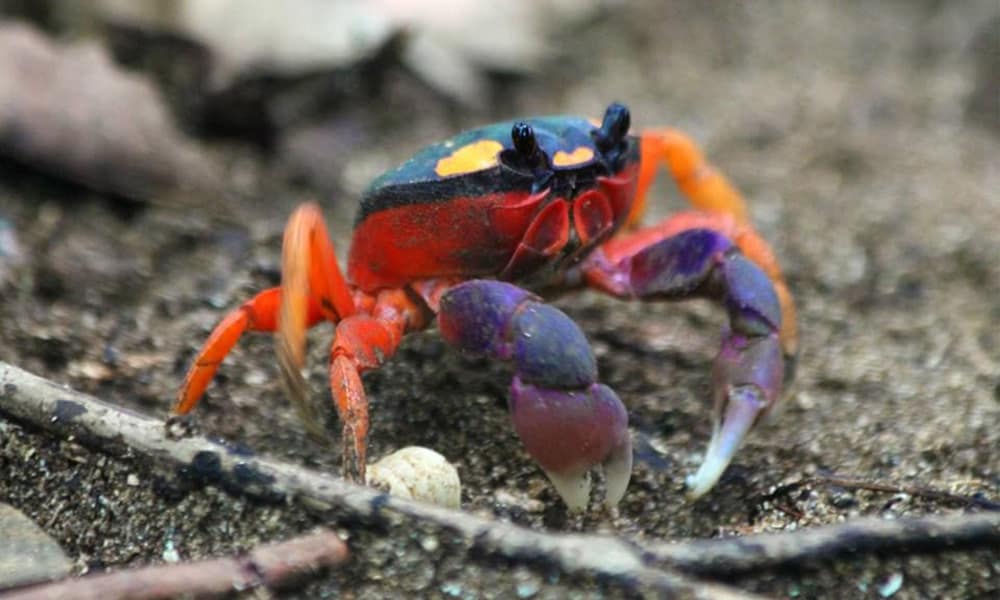Today we meet the Halloween crab. It’s a colorful crab that lives in the forest and has a degree in engineering.
The Halloween crab (Gecarcinus quadratus) is a crab of many names. In English, it’s also known as the red land crab, whitespot crab, moon crab, Halloween moon crab, mouthless crab, or harlequin land crab. In Spanish, cangrejo Halloween, cangrejo de tierra rojo or cangrejo de tierra patas rojas.
All of these names describe the same colorful crab. Halloween crabs are pretty. They are some combination of bright orange, black, purple, blue, and white. In a world where most creatures are nearly impossible to distinguish from the background, with some appearing nearly identical to the plant they’re sitting on, Halloween crabs go the other way with it. When you’re walking in a coastal forest where Halloween crabs are present, you’re not missing them. They’re like bright six-legged beacons scooting around the forest floor.
Halloween crabs are found along the Pacific coast of Costa Rica. Their lives begin in the ocean, but as adults they live in the mangroves and coastal forests along the beach. The literature says that they only venture some 600 meters from the water’s edge, but tell that to the large, white-clawed adult that was threatening my kids and dog in the backyard, about a kilometer and a half from the beach.
Even though they skipped the textbooks, classes and years of student loans, these little crabs are famously engineers. Specifically, ecosystem engineers. Ecosystem engineers are species that modify, maintain, and/or create habitats.
Halloween crabs carry out these functions in a few ways. First, they dig deep burrows. Using their claws and a lot of determination, they dig burrows into the sandy soils of the coastal forests and mangroves that can reach depths of five feet.
These burrows then serve as homes for a host of other creatures after the crab has moved on or become something’s dinner. They also participate in the nutrient cycle. They eat seeds, seedlings, and leaf matter, which they carry down to their burrows returning nutrients to the soil. Their diet affects their environment in another way. The seeds and seedlings that they decide to eat or not eat ultimately help to shape the plant populations in the areas where they live.
Halloween crabs are a species of wildlife that are frequently a part of my life. Like I mentioned earlier, every once in a while they pay a visit to my house. I also visit their homes both while I work, checking camera traps in forests along the Pacific coast, and while I play, laying the family beach blanket among the crab burrows of our local beach.
When the camera trap project is on a beachfront property, Halloween crabs are also prominently featured in my camera trap videos, though in a way that they personally don’t enjoy. Usually when I record a Halloween crab, it is in the process of being eaten by some other creature.
Though it’s a bummer for them, they also contribute to their environment by being an important food source to many of Costa Rica’s birds, mammals and reptiles. So, check out at the video below and meet the Halloween crab (while it’s being eaten by something).
About the Author
Vincent Losasso, founder of Guanacaste Wildlife Monitoring, is a biologist who works with camera traps throughout Costa Rica. Learn more about his projects on facebook or instagram. You can also email him at: vincent@guanacastewildlifemonitoring.com

